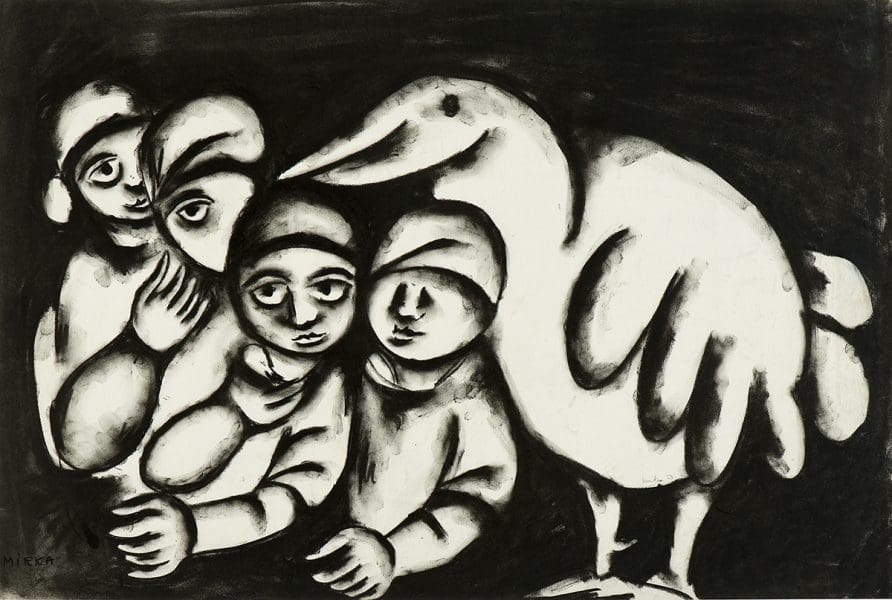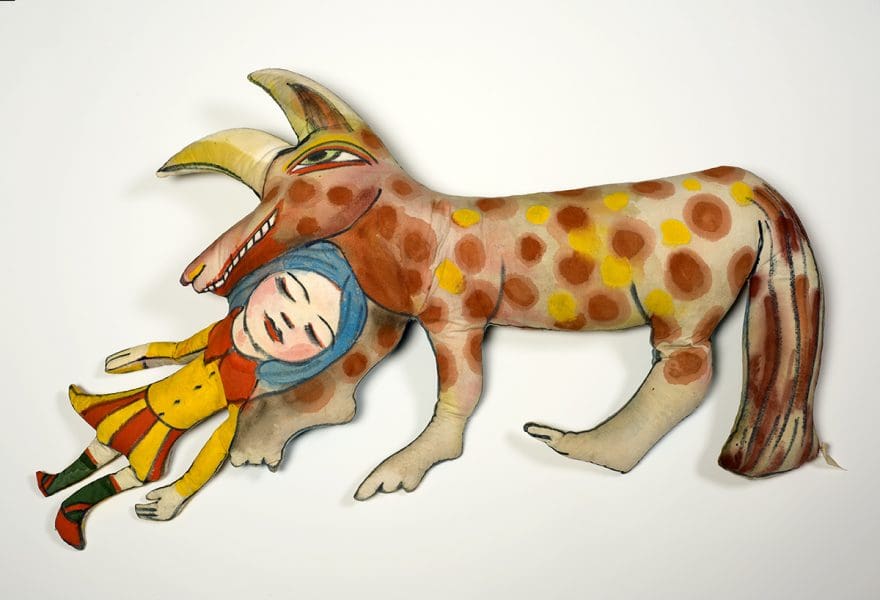
Making Space at the Table
NAP Contemporary’s group show, The Elephant Table, platforms six artists and voices—creating chaos, connection and conversation.




The Melbourne-based artist Mirka Mora has died at the age of 90. “Mirka was a central figure in the story of Heide, and in Melbourne’s cultural life,” says Lesley Harding, artistic director of Heide Museum of Modern Art, where Mora’s next exhibition, Pas de Deux – Drawings and Dolls, had already been scheduled to open in October.
Harding says Mora possessed “rare insight and sensitivity” and created “distinctive imagery characterised by fantastical creatures derived from various art historical and literary sources, as well as the artist’s own invention.”
Mirka Mora arrived in Melbourne from war-ravaged Paris in 1951 with her husband Georges, a French resistance fighter. She had narrowly escaped Auschwitz as a child, having been arrested with her Romanian mother, Celia Gelbein, in a roundup in 1942 during the largest French deportation of Jews during the Holocaust.
Mirka and Georges quickly became bohemian fixtures in Melbourne’s artistic and epicurean community from their studio apartment at 9 Collins Street, establishing the Mirka Café in Exhibition Street and later their other restaurants, Balzac and Tolarno.
The couple would host parties, bringing together key players in Melbourne’s artistic scene, including John Perceval, Sidney Nolan and John and Sunday Reed, the art patron couple whose home became the Heide Museum of Modern Art at Bulleen, north-east of the city.
While Georges, who died in 1992, became an art dealer, Mirka took her art to traditional galleries – including that of their art dealer son William – and to the streets, decorating Flinders Street Station with mosaics and painting a tram, adding colour and vibrancy to her adopted city.
Son William announced the death of the family matriarch. “An artist and mentor who touched the lives of thousands, she has had an indelible effect on Australia’s cultural life. At 90, she fought Alzheimer’s and age-related illness to the end. The joie de vivre she has shared with so many will continue in her immense legacy of art and her spirit of generosity.”
“Other people like to paint when they’re unhappy but I’m not because I’m depending on my brain and my brain must be clear and beautiful, she said. “I like to be on my own because you have to grab invisible things and make them visible. It’s weird isn’t it? It’s very strange. The voice comes out of my mouth and the drawing comes out of my hand, my brush.”
A new book, Mirka and Georges, has been released to coincide with the new exhibition at Heide, and a story on Pas de Deux – Drawings and Dolls and Mirka Mora’s practice will feature in the November-December print issue of Art Guide Australia.
Pas de Deux – Drawings and Dolls
Mirka Mora
Heide Museum of Modern Art
27 Oct – 24 March